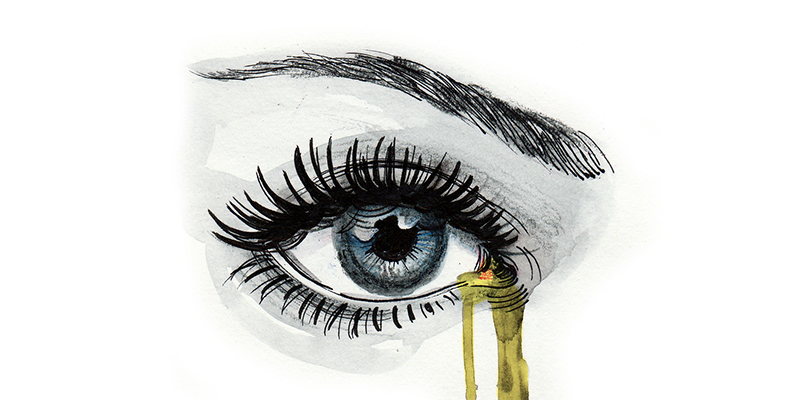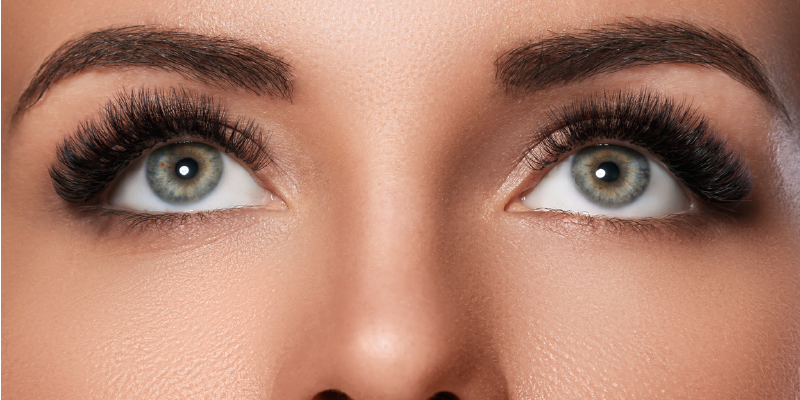If you’re an avid gamer, you might notice that your eyes start to feel dry, sore or otherwise uncomfortable after gaming for long periods of time. Whether you play using a computer monitor, a tablet or a TV screen, the blue light emitted from these devices can be harmful to your eyes if you’re not careful. Here are some of the ways that blue light can affect your eye health and what you can do to help minimize these effects.
The Effects of Blue Light on Eyes

Virtually all parts of the electromagnetic spectrum can be harmful to our eyes if exposed to high magnitudes, but research has shown that the most harmful wavelengths of light are UVA, UVB and “blue light” [1]. The ways in which blue light affects the structure of the eye, however, differs from that of UVA and UVB rays, with blue light primarily affecting the inner retinal structures and UVA and UVB rays affecting the front of the eye [1]. Thus, exposure to blue light can pose an increased risk of developing cataracts, accelerated macular degeneration and even uveal melanoma [2, 3].
In addition to these long-term risks, exposure to blue light, whether from gaming, working on your computer or scrolling through social media on a smartphone, also contributes to many short-term effects on the eyes. Aptly dubbed “computer vision syndrome,” the most notable side effects of blue light exposure include eye dryness, redness, and soreness, as well as blurred vision and headaches [4]. If you struggle with an existing eye condition like blepharitis, ocular rosacea or allergies, staring at a screen for long periods of time can worsen your symptoms.
Tips for Better Eye Health

When playing video games or using your computer or other similar devices for more than about 20 minutes at a time, you can try wearing special glasses specifically designed to filter out blue light before it can reach your eyes. Because we now rely on screens for so many different aspects of our lives, including both work and play, these glasses have become incredibly popular lately. However, studies have found that while these types of glasses may partially protect against high-energy, short-wavelength light, they still need to be used in combination with other methods of protecting the eyes from excessive blue light exposure [5].
One way to protect your eyes is to give them a break from your screen every 20 or 30 minutes by looking away and focusing on something at least 20 feet away. If dry eye is a concern for you, adding an omega-3 supplement to your diet may help to increase the fluid content of your eyes to help relieve symptoms. When gaming, try to make a conscious effort to blink frequently, as we tend to blink much less than normal when we perform near-sighted activities like playing video games, working on the computer or reading.
It’s also important that you regularly cleanse the eye area with a gentle, non-irritating cleanser at least once a day, to remove bacteria, pollutants and other harmful substances that may have built up on your eyelids and lashes throughout the day. If you do suffer from dry eye, blepharitis or other common eye conditions, cleansing the area surrounding your eyes can help to significantly reduce your symptoms.
In Summary
Short of giving up their favorite games or even their desk job, many people who struggle with signs of computer vision syndrome feel that their eye health is simply out of their hands. This, however, doesn’t have to be the case. By adjusting your regular gaming or work habits to include frequent short breaks from staring at your screen and integrating healthy eye care tips into your regular routine, you can take an active role in improving your eye health, vision and comfort.
[1] American Optometric Association
[4] American Optometric Association
[5] PLoS One





